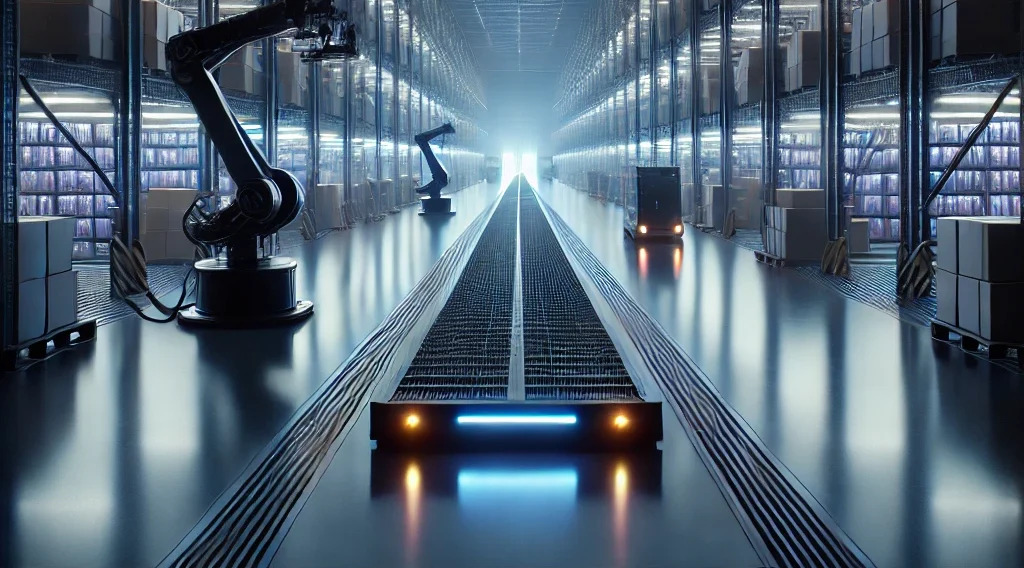Dark stores are a new fulfillment method that has recently emerged for the online marketplace. The manner in which products are delivered is being rapidly revolutionized by these stores.
It optimizes operations and employs strategic locations to facilitate faster deliveries and improve the overall efficiency of the fulfillment process.
This blog will investigate the concept of dark stores, their operation, and the reasons they are becoming an indispensable element of the near future of e-commerce fulfillment.
What are Dark Stores?
Dark stores are basically retail areas modified for processing online purchases. Unlike conventional stores, these ones are unavailable to walk-in consumers.
They are micro-fulfillment facilities that are best suited for customer order pickup, packaging, and distribution. Dark stores are suitable in urban and suburban areas to offer customers same-day or next-day delivery.
Dark stores are suitable for a broad spectrum of products, offering them a flexible solution to remain competitive in the e-commerce scene.
The Driving Forces Behind Dark Stores
The rise of dark stores can be attributed to several key factors:
Consumer Demand for Speed
Modern consumers anticipate expedited delivery times. Dark stores that are located in close proximity to residential areas can substantially reduce delivery lead times for companies. AMZ Prep has published an article with useful insights on expedited shipping that meets customer demand.
E-commerce Boom
The pandemic has accelerated the global surge in online purchasing, necessitating the development of innovative fulfillment strategies. Dark stores provide a scalable and efficient solution for managing heightened order volumes.
Operational Efficiency
Dark stores are designed to facilitate the processing of orders with precision and speed, in contrast to conventional warehouses. Employees can focus solely on fulfillment operations, which increases productivity, as there are no in-store customers.
Rising Costs of Urban Warehousing
In metropolitan areas, more space is more expensive. Dark stores, which are typically situated in renovated retail spaces, offer an affordable alternative for large-scale warehouse solutions.
How Do Dark Stores Operate?
In an effort to ensure reliable operations, dark stores implement advanced technology and optimized procedures. An overview of their typical workflow is provided below:
Inventory Management
Real-time inventory tracking systems ensure that products are always available and that restocking is planned promptly.
Order Picking
The layout of dark stores is designed to minimize order-picking times, in addition to deploying resources and automated systems to pick items for fulfillment.
Packing and Dispatching
In order to optimize customer satisfaction, orders are meticulously packaged and dispatched for delivery with the assistance of last-mile logistics providers.
Data-Driven Optimization
Analytics and AI tools monitor performance metrics to enable continuous improvements in speed and accuracy.
The Benefits of Dark Stores for E-commerce
Dark stores present numerous advantages for businesses and consumers alike:
Faster Deliveries
Businesses are capable of satisfying the increasing demand for same-day or even two-hour deliveries due to their proximity to urban centers.
Improved Order Accuracy
Dark stores guarantee a superior customer experience by minimizing the likelihood of errors through the implementation of streamlined operations and a dedicated fulfillment staff.
Cost Efficiency
Businesses optimize the utilization of underutilized spaces while reducing retail operational costs, including display preparation and in-store personnel.
Scalability
Dark stores can be scaled up or down based on demand, making them a flexible solution for businesses.
Enhanced Inventory Visibility
Centralized systems provide real-time updates on stock levels, preventing overselling and ensuring better inventory management.
Challenges and Considerations
Even though dark shops have benefits, they also have some problems. The following are challenges that businesses must overcome in order to achieve their full potential:
High Initial Setup Costs
Establishing a dark store requires significant investment in infrastructure, technology, and training.
Zoning and Regulations
Converting retail spaces into fulfillment centers often involves navigating laws and regulations.
Logistical Complexities
The efficient management of last-mile deliveries remains a challenge, particularly in densely populated areas with heavy traffic.
Sustainability Concerns
The rapid delivery model often relies on extensive vehicle usage, raising concerns about environmental impact.
Real-World Examples of Dark Stores in Action
Several global brands have successfully integrated dark stores into their fulfillment strategies:
Amazon Fresh
In order to facilitate ultra-fast deliveries in critical markets, Amazon has implemented dark stores as part of its grocery delivery service.
Walmart
Walmart utilizes dark stores to optimize its grocery collection and delivery services, thereby improving consumer convenience.
Zappos
Dark stores are implemented by online shoe retailers to expedite order fulfillment, thereby decreasing return rates by guaranteeing punctual deliveries.
The Future of Dark Stores
The dark store is evolving with technological advancements and logistics innovation. Here are a few trends to watch:
Automation and Robotics
Automated picking equipment and self-driving delivery trucks will redefine the dark stores more efficiently.
Integration with Omnichannel Strategies
Dark stores have become an integral part of creating omnichannel retail strategies to manage online and offline purchases.
Sustainability Initiatives
Using electric cars for delivery and integrating energy-efficient systems in dark storefronts to achieve the intended goal of reducing environmental impacts.
Personalization and AI
Advanced AI tools will allow dark stores to predict consumer preferences and optimize inventory to offer a personalized shopping experience.
Conclusion: Dark Stores as a Competitive Edge
Dark stores are becoming an element of success in quick commerce. From sustainable delivery practices to automation and AI-driven inventory management, it has added the dark store potential for innovation. Companies that have adopted this model are positioning themselves for long-term growth and resilience in the developing retail landscape.
